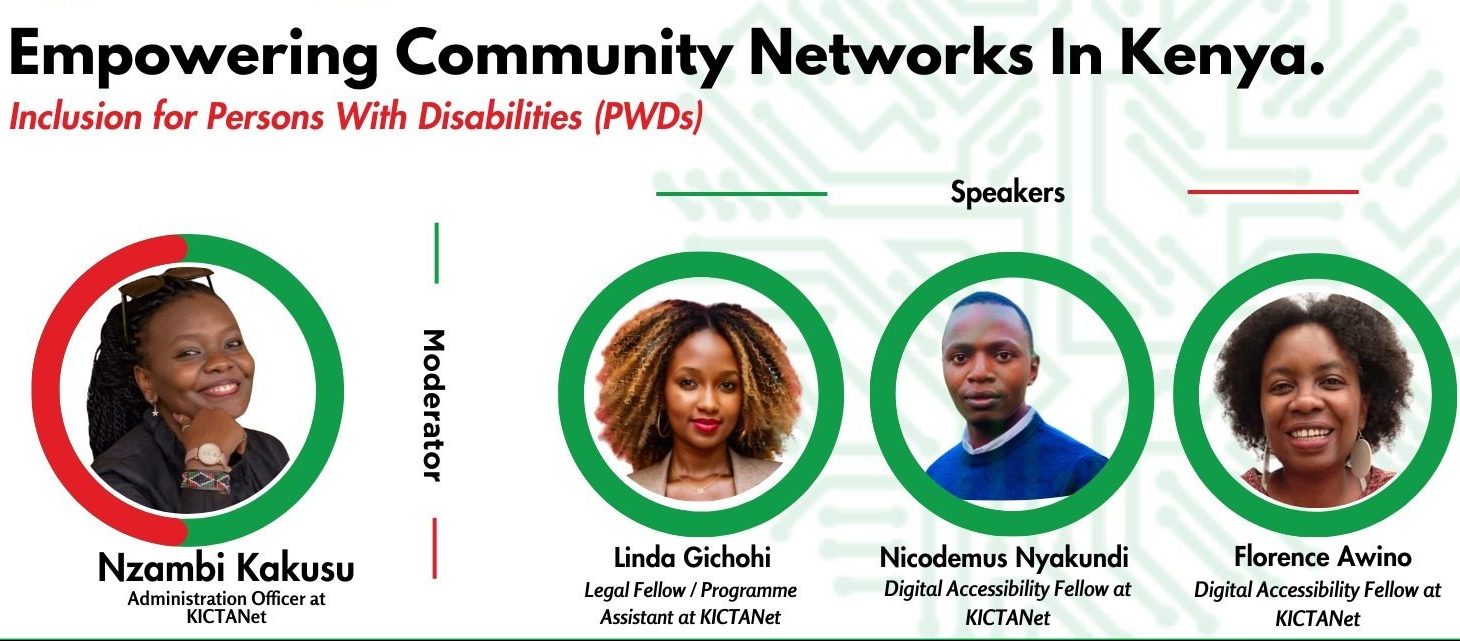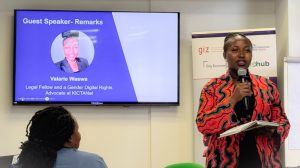Community Networks (CNs) are powerful tools for reaching out to and connecting with communities at the grassroots level. They operate within the community’s norms and ways of life, better equipping them to ensure Disability, Equity, and Inclusion (DEI).
The following learnings have been drawn from training workshops by the KICTANet Digital accessibility team on empowering community networks in Kenya to include persons with disabilities.
Inclusion takes many forms, but one of the most important aspects is accessibility.
Accessibility
Accessibility refers to the design of products, devices, services, or environments that make them usable by people with disabilities. It ensures direct (unassisted) and indirect access is compatible with assistive technologies such as computer screen readers.
Accessibility is not only the right thing to do, but it often benefits all users. That’s because accessibility features that help people with disabilities usually help others, too. For instance, video captions that help people with hearing difficulties also help someone watch the video on mute (in a social media feed). Legible, high-contrast text that helps people with vision difficulties also helps people with perfect eyesight who use the app outdoors in bright sunlight.
Many users, whatever their abilities, will face challenges due to demanding contexts. When you design for all ability levels, you can create products and services anyone can use and enjoy—or at least find helpful or calming.
Accessibility specifically addresses the needs of people with disabilities, ensuring they can access and use digital content without barriers.
It goes beyond usability by considering the unique requirements of individuals with visual, auditory, cognitive, or motor impairments. Web accessibility, for instance, ensures that websites are comprehensible, navigable, and engaging for everyone.
However, the internet space divides accessibility into two significant categories: reachability and usability.
Reachability implies that people can access information, services, or physical spaces without significant barriers.
Under the context of CN, it can potentially deliver Internet and digital services to communities that would otherwise have had difficulties accessing them (Refer to this article on CN’s role as the last mile connector). This can be achieved by providing community members with smartphones, tablets, or computers.
Additionally, the CN can set up networks that are cost-effective, easy to use, and accessible to everyone.
Usability focuses on making products, systems, or digital content easy to use and efficient for all users.
It encompasses factors that contribute to a positive user experience, such as intuitive design, ease of learning, efficiency, memorability, error handling, and subjective satisfaction.
While usability focuses on general user experiences, accessibility specifically targets disabled users.
Accessibility can also include a favourable environment for using the Internet and other digital platforms since some environments can hinder persons with disabilities. For example, an environment devoid of background noise, no flushes that can trigger a seizure, ambient light/lighting, and ambient room colour.
Accessibility Best Practices
One of the best practices for achieving accessibility and inclusion within CNs is by partnering and collaborating with people, organisations, and advocacy groups from diverse backgrounds within the disability community.
Collaborating ensures that the community network’s design and services consider a wide range of needs of persons with disabilities. This can be achieved by involving people with disabilities in the network’s planning, design, and implementation phases.
It is essential to recognise that each person’s needs are unique, and disability is diverse.
Offering accommodations is a more than one-size-fits-all solution. Working individually with participants to arrange equitable accommodations and considering factors such as assistive technologies, communication preferences, and physical accessibility can warrant individualised accommodations.
Another best practice for achieving accessibility and inclusion is using plain language when creating marketing materials, information brochures, or website content.
It is essential to ensure that the language used follows the Web Content Accessibility Guidelines (WCAG) and World Wide Web Consortium (W3C) recommendations. Using clear and straightforward language ensures that everyone can understand the information.
It is also essential to provide training and support to community members to ensure they can use the network’s devices and services. This can be achieved by conducting capacity-building sessions, providing user manuals, and providing technical support. Additionally, ensuring that the network’s services are affordable, sustainable, and resilient is essential.
In conclusion, Accessibility and Inclusion are essential for ensuring CNs reach and connect with everyone, including persons with disabilities.
RELATED
- Part 1: Bridging the Digital Divide: Community Networks for Disability Inclusion
- Part 2: Beyond Buzzwords: Unveiling True Inclusion in Society and Community Networks
![]()




